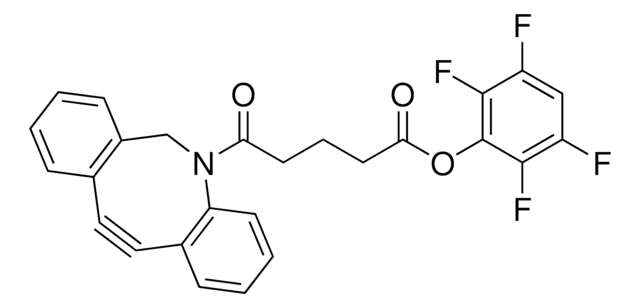Kluczowe dokumenty
777366
DBCO-Cy3
for Copper-free Click Chemistry
Synonim(y):
ADIBO-Cy3, Azadibenzocyclooctyne-Cy3, Dibenzocyclooctyne-Cy3
About This Item
Polecane produkty
Poziom jakości
Formularz
solid
przydatność reakcji
reaction type: click chemistry
temp. przechowywania
−20°C
ciąg SMILES
CC1(C)C(/C=C/C=C2N(CCCS([O-])(=O)=O)C3=CC=C(S(=O)([O-])=O)C=C3C/2(C)C)=[N+](CCCCCC(NCCC(N4CC(C=CC=C5)=C5C#CC6=C4C=CC=C6)=O)=O)C7=C1C=C(S(=O)([O-])=O)C=C7.CC[NH+](CC)CC.CC[NH+](CC)CC
InChI
1S/C50H54N4O11S3.2C6H15N/c1-49(2)40-32-38(67(60,61)62)23-25-43(40)52(45(49)18-12-19-46-50(3,4)41-33-39(68(63,64)65)24-26-44(41)53(46)30-13-31-66(57,58)59)29-11-5-6-20-47(55)51-28-27-48(56)54-34-37-16-8-7-14-35(37)21-22-36-15-9-10-17-42(36)54;2*1-4-7(5-2)6-3/h7-10,12,14-19,23-26,32-33H,5-6,11,13,20,27-31,34H2,1-4H3,(H3-,51,55,57,58,59,60,61,62,63,64,65);2*4-6H2,1-3H3
Klucz InChI
HDOXKDFHZWYVPF-UHFFFAOYSA-N
Zastosowanie
Solubility: DMSO; DMF
Abs/Em: 553/563 nm
Extinction Coefficient:: 151,000 cm-1M-1
Hasło ostrzegawcze
Warning
Zwroty wskazujące rodzaj zagrożenia
Zwroty wskazujące środki ostrożności
Klasyfikacja zagrożeń
Eye Irrit. 2 - Skin Irrit. 2 - STOT SE 3
Organy docelowe
Respiratory system
Kod klasy składowania
11 - Combustible Solids
Klasa zagrożenia wodnego (WGK)
WGK 3
Temperatura zapłonu (°F)
Not applicable
Temperatura zapłonu (°C)
Not applicable
Wybierz jedną z najnowszych wersji:
Masz już ten produkt?
Dokumenty związane z niedawno zakupionymi produktami zostały zamieszczone w Bibliotece dokumentów.
Klienci oglądali również te produkty
Produkty
Copper-free click chemistry is an alternative approach to click chemistry that proceeds at a lower activation barrier and is free of cytotoxic transition metal catalysts.
Nasz zespół naukowców ma doświadczenie we wszystkich obszarach badań, w tym w naukach przyrodniczych, materiałoznawstwie, syntezie chemicznej, chromatografii, analityce i wielu innych dziedzinach.
Skontaktuj się z zespołem ds. pomocy technicznej

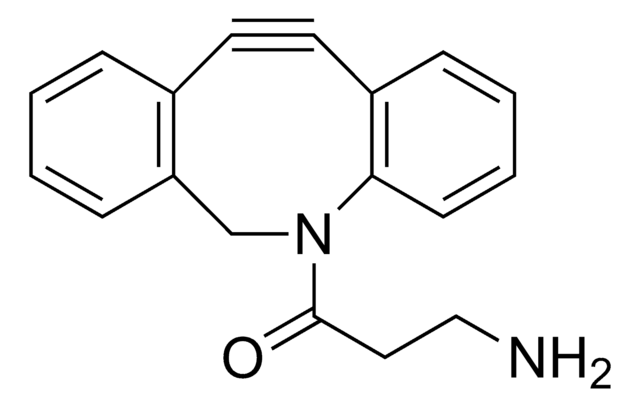
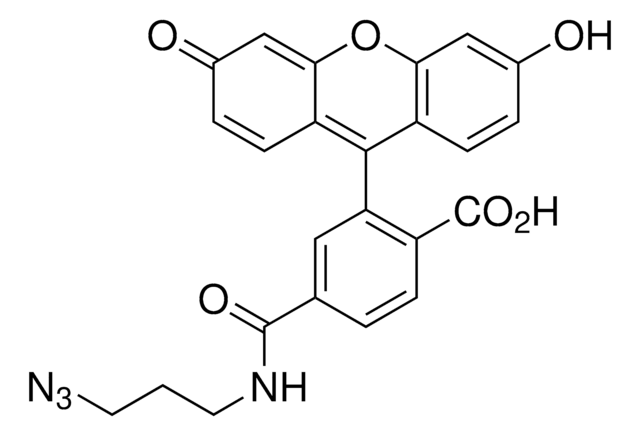


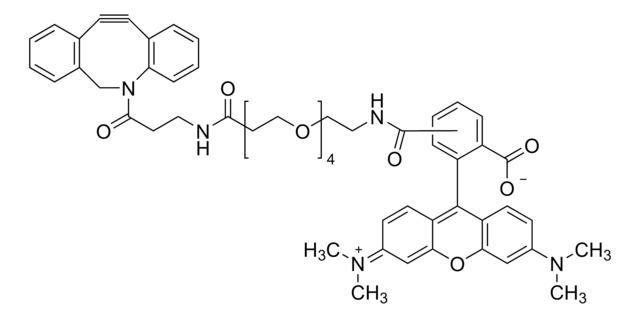
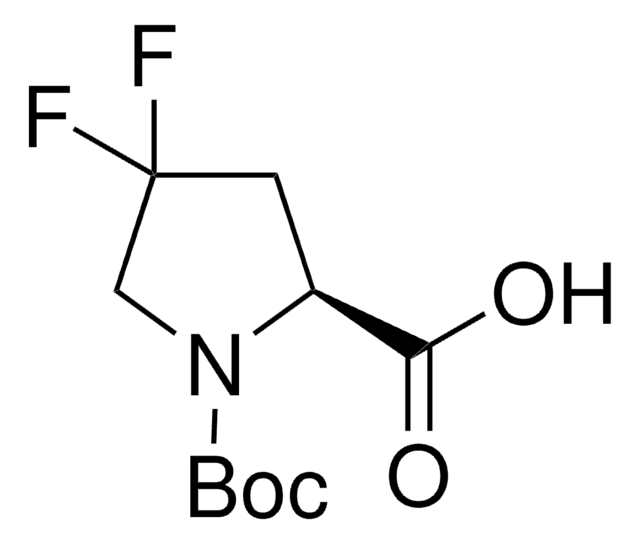
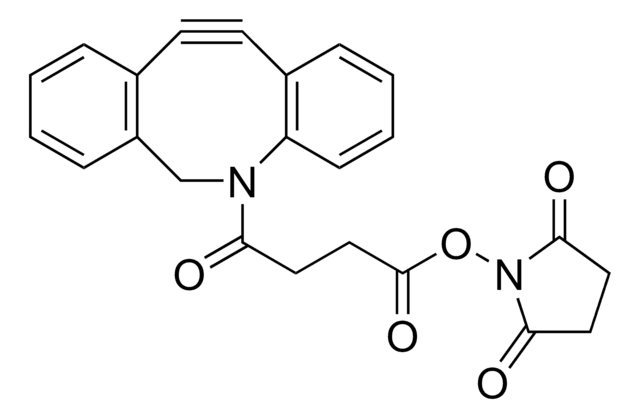
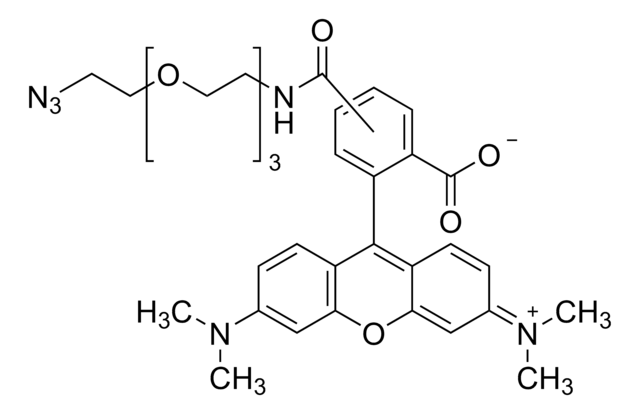


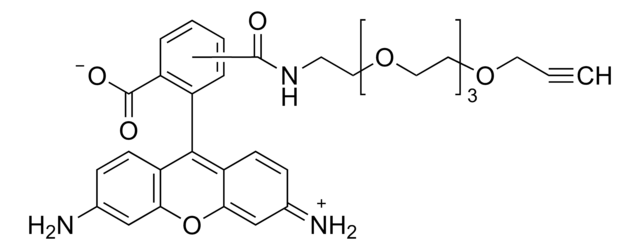
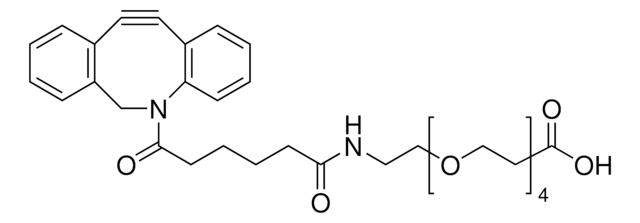
![N-[(1R,8S,9s)-Bicyclo[6.1.0]non-4-yn-9-ylmethyloxycarbonyl]-1,8-diamino-3,6-dioxaoctane for Copper-free Click Chemistry](/deepweb/assets/sigmaaldrich/product/structures/294/853/c5e47d84-5aee-4797-aa24-604f291171cc/640/c5e47d84-5aee-4797-aa24-604f291171cc.png)
